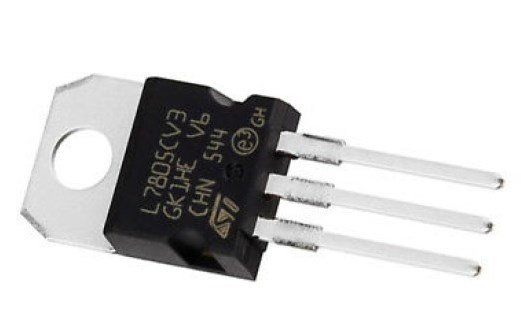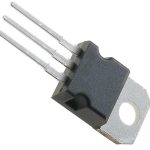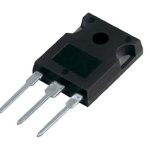Voltage regulation is a fundamental aspect of electronics, ensuring stable and reliable power supply to various components and devices. Among the wide array of voltage regulators available, the L7805CV stands out as a popular choice for beginners and experienced enthusiasts alike. With its straightforward operation and versatility, the L7805CV voltage regulator provides a simple yet effective solution for maintaining a constant voltage output.
Understanding the L7805CV Voltage Regulator
The L7805CV is a popular voltage regulator manufactured by STMicroelectronics. It is part of the L78 series of fixed voltage regulators and is specifically designed to provide a regulated 5V output. The L7805CV regulator offers a simple and cost-effective solution for converting higher input voltages to a stable 5V output suitable for powering various electronic components.
Key features and specifications
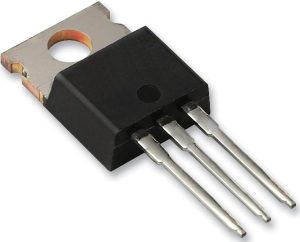
- It has a maximum input voltage rating of up to 35V, allowing it to handle a wide range of input voltages.
- The regulator is capable of delivering a continuous output current of up to 1.5A, making it suitable for powering a variety of electronic devices.
- It also provides excellent line and load regulation, ensuring a stable output voltage even under varying input voltages and load conditions.
- Additionally, the L7805CV incorporates built-in thermal overload protection and short-circuit current limiting, enhancing its reliability and safety.
Working Principle of L7805CV
The L7805CV voltage regulator operates based on the principle of linear voltage regulation. It utilizes a series pass transistor in conjunction with a feedback mechanism to maintain a constant output voltage. The internal circuitry of the L7805CV consists of a voltage reference, error amplifier, and pass transistor.
The voltage reference sets the desired output voltage, while the error amplifier compares the actual output voltage with the reference voltage and generates an error signal. This error signal controls the pass transistor, adjusting its resistance to regulate the output voltage. By continuously monitoring and adjusting the pass transistor, the L7805CV ensures that the output voltage remains constant despite changes in the input voltage or load conditions.
Internal circuitry and components
These components include the voltage reference, error amplifier, pass transistor, and supporting resistors and capacitors.
- The voltage reference provides a stable reference voltage, typically 5V, against which the output voltage is compared.
- The error amplifier amplifies the difference between the reference voltage and the output voltage, generating the error signal.
- The pass transistor, usually a Darlington pair or a power MOSFET, controls the current flow to maintain the desired output voltage.
- Additionally, the regulator incorporates resistors and capacitors for stability, filtering, and compensation purposes.
Understanding L7805CV Datasheet
Datasheets are invaluable resources when it comes to selecting electronic components for a particular application. They provide critical details about a component’s specifications, performance parameters, and limitations.
By carefully examining the datasheet, engineers can ensure that the chosen component meets their project requirements in terms of voltage range, current capability, temperature tolerance, and other essential factors. Additionally, datasheets often contain application notes and design guidelines that aid in the proper utilization of the component, enhancing reliability and performance.
How to interpret and navigate the L7805CV datasheet?
The datasheet begins with an overview of the component, highlighting its key features and functionality. It then provides detailed technical specifications, including input and output voltage ranges, maximum current capabilities, dropout voltage, and thermal characteristics. Additionally, the datasheet presents graphs, such as the load regulation and output voltage vs. temperature curves, aiding in system design and optimization.
Each section in the datasheet delves into a different aspect of the L7805CV, such as pin configuration, recommended external components, and application information. By following the logical flow of the datasheet, readers can access the necessary details to integrate the L7805CV effectively into their projects.
L7805CV Pinout and Configuration
Understanding the pinout and configuration of the L7805CV is crucial for successful integration. The component typically comes in a TO-220 package, which features three pins: input (Vin), output (Vout), and ground (GND). The datasheet provides a detailed pinout diagram, illustrating the physical arrangement of these pins. Additionally, it describes the functionality of each pin, clarifying their roles in the voltage regulation process.
The input pin (Vin) is where the unregulated DC power source is connected, while the output pin (Vout) delivers the regulated voltage to the load. The ground pin (GND) serves as the common reference point for the regulator and the connected circuit. Understanding the pin configuration ensures correct wiring and avoids potential damage caused by reversed connections.
Installing and Using L7805CV
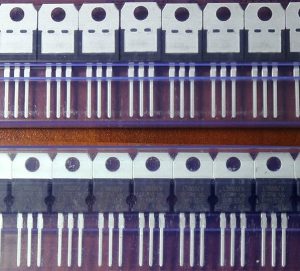
First and foremost, the component should be properly mounted on a suitable heatsink to dissipate excess heat during operation. The datasheet provides guidelines for selecting an appropriate heatsink based on expected power dissipation levels.
To install the L7805CV, the input pin (Vin) should be connected to the unregulated power supply, ensuring proper polarity. The output pin (Vout) is then connected to the load, supplying the regulated voltage. Finally, the ground pin (GND) is connected to the common ground of the system.
When using the L7805CV, it is important to follow best practices to ensure stable and reliable operation. For example, bypass capacitors should be added near the input and output pins to minimize noise and stabilize the voltage. Adhering to the recommended operating conditions, such as maintaining the input voltage within the specified range and staying within the maximum current limits, is also crucial for optimal performance.
Advantages and Limitations of L7805CV
The L7805CV voltage regulator has many advantages that make it a popular choice for hobbyists and professionals alike.
- One of its main advantages is its simplicity – it requires only a few components to create a stable voltage source.
- Additionally, the L7805CV has a wide input voltage range, making it versatile for use in a variety of applications. Furthermore, this voltage regulator is readily available, affordable, and easy to use.
However, there are also some limitations to consider when using the L7805CV.
- For instance, it has a limited output current capacity, making it unsuitable for high-power applications.
- Moreover, it can generate significant heat when regulating high current loads, necessitating the use of a heat sink.
Advantages of using L7805CV in different applications
One key advantage of using the L7805CV in these applications is its ability to provide a stable voltage output, which is crucial for the proper operation of electronic devices. Additionally, the L7805CV can be used as a low-dropout voltage regulator, which is useful in scenarios where the input voltage is close to the output voltage required. Moreover, the L7805CV can be used in battery-powered devices to regulate the voltage of the battery, extending the life of the battery by preventing overvoltage.
Limitations and considerations for specific use cases
Despite its many advantages, the L7805CV may not be suitable for all applications. In cases where high currents are involved, such as motor control circuits, the L7805CV may not be able to handle the load and could overheat. Therefore, it is essential to consider the maximum current requirements of the circuit before using the L7805CV. Additionally, the L7805CV requires a minimum input voltage to provide a stable output voltage. Therefore, it is essential to ensure that the input voltage meets the required threshold to prevent voltage drops and unstable operation.
Troubleshooting and Common Issues
Like any electronic component, the L7805CV can encounter common issues during its operation.
One of the most common problems is input voltage noise, which can cause unwanted variations in the output voltage. To resolve this issue, it is recommended to add a capacitor at the input and output of the voltage regulator to filter out noise.
Another common issue is thermal drift, which occurs when the temperature of the device changes, affecting its output voltage. In such cases, adding a heat sink or reducing the load on the device can help prevent thermal drift.
Finally, it is essential to ensure that the input voltage and current requirements of the circuit are met to prevent overloading the L7805CV and causing damage to the device. In case of any concerns, resources such as online forums, datasheets, and application notes can be consulted for further guidance.
Conclusion
The L7805CV voltage regulator is an essential component for achieving reliable and stable power supply in electronic circuits. Its simplicity, along with its ability to regulate voltage efficiently, makes it a go-to choice for both beginners and experienced electronics enthusiasts. By understanding the datasheet, pinout configuration, and operational considerations, you can confidently incorporate the L7805CV into your projects, ensuring optimal performance and protection for your valuable electronic components.

